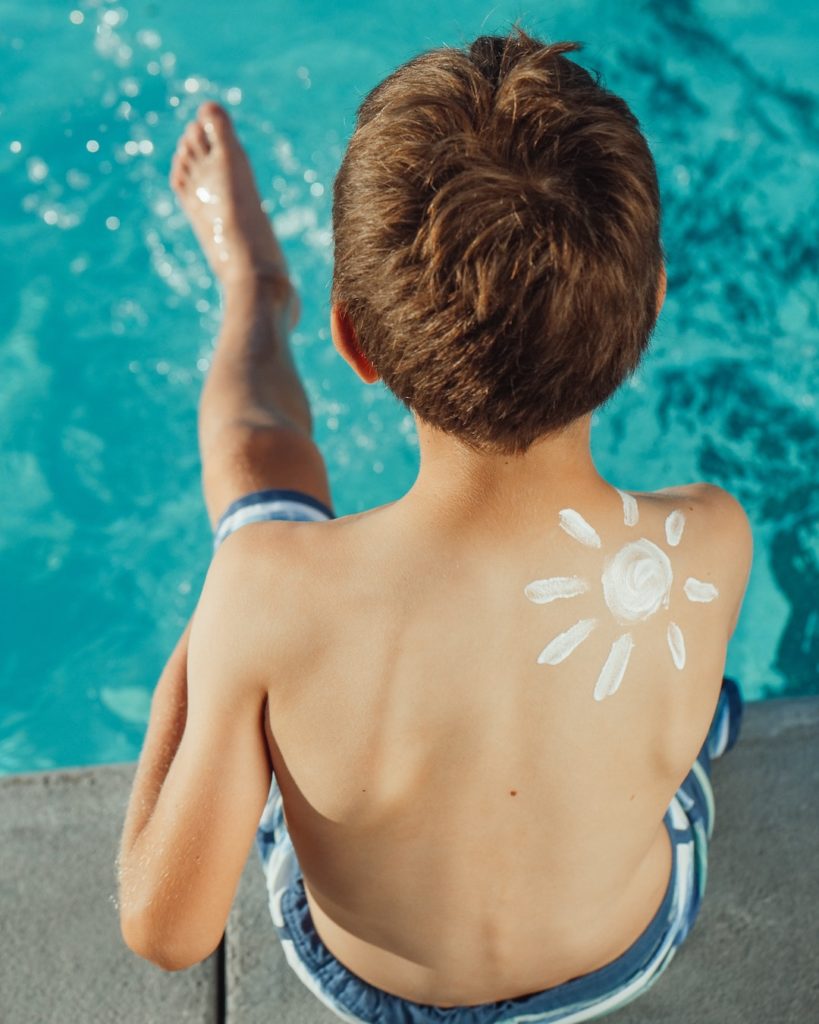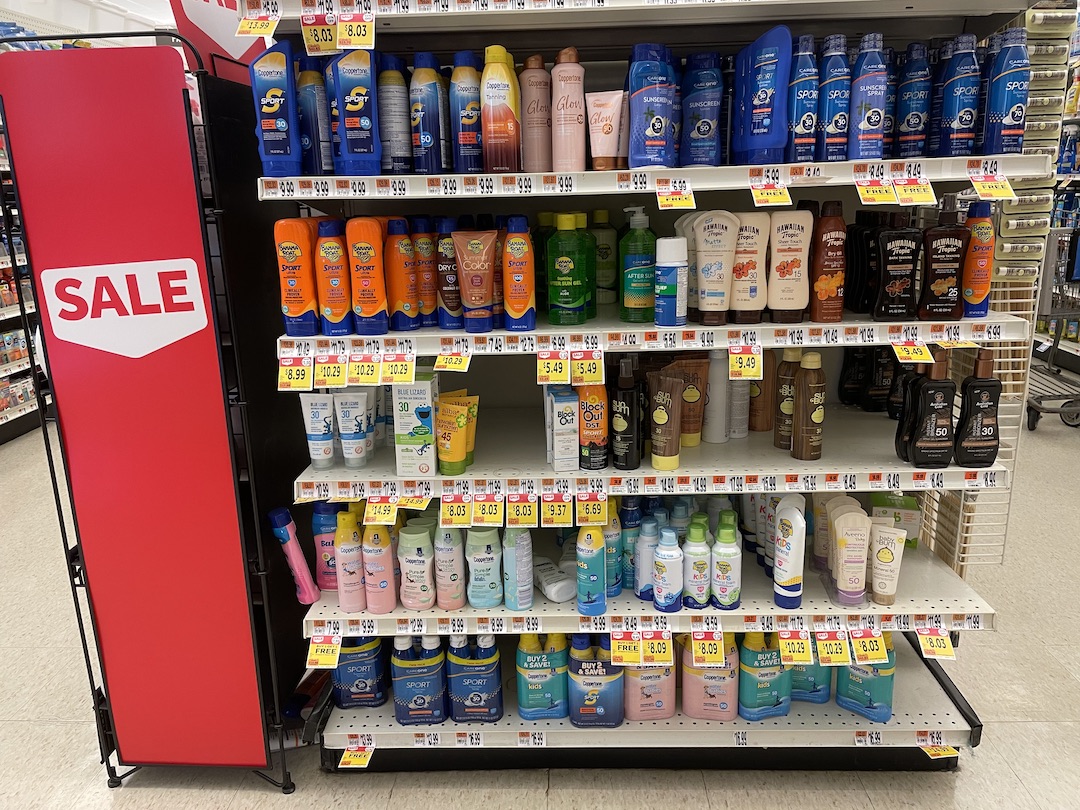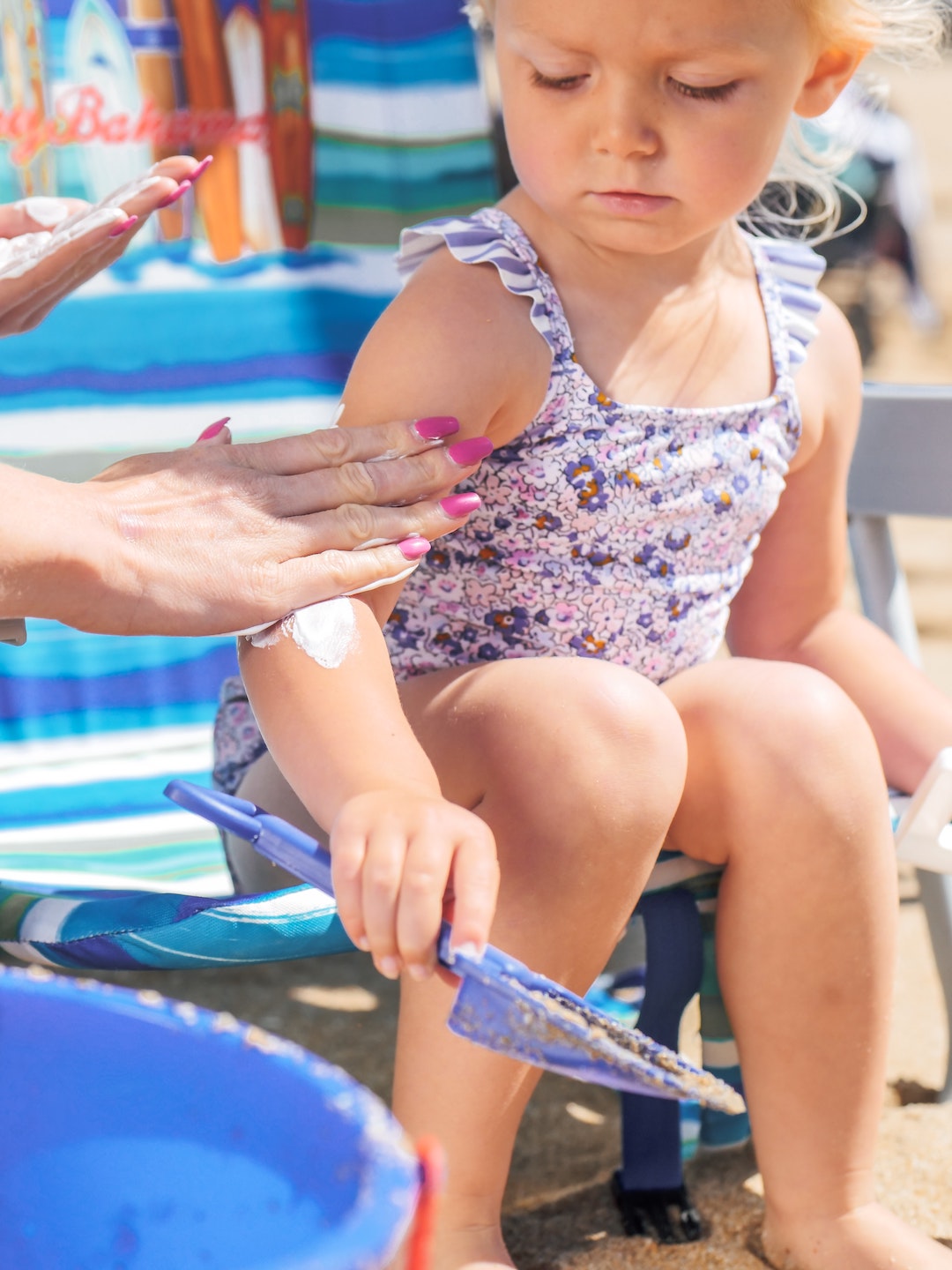
It’s not easy to buy a safe, natural sunscreen for your children. More than once we have left stores because we couldn’t find a brand that didn’t have chemical UV filters or irritating ingredients. There are some brands that we like though. Nuthatch Naturals doesn’t make a sunscreen yet, but we will in the future.
First of all, it’s super important for kids to use sunscreen when playing outside. UV radiation from the sun can cause skin cancer, one of the most common cancers in the US, even in children. When your child has an odd shaped mole, please have it checked out by your pediatrician, who may refer you to a dermatologist.
There are 2 kinds of UV radiation that reach the earth’s surface from the sun. They are UVA and UVB and they differ in how deeply they penetrate the skin. Sunburn is caused by UVB, which doesn’t go into the skin as deep as UVA, which causes premature skin aging and wrinkles. Both can cause skin cancers, such as melanoma.
The SPF number on a bottle of sunscreen refers to UVB protection only, not UVA. It is measured by irradiating volunteers with artificial sunlight and see how red their skin becomes. An SPF of 30 means that your skin with sunscreen would take 30 times longer to burn than without sunscreen. It doesn’t mean that your skin won’t burn, because you need to reapply every few hours. A sunscreen that is Broad Spectrum protects against both UVA and UVB. We only buy broad spectrum sunscreens.
When buying a sunscreen, we look for products with mineral UV filters. The active ingredients list on the bottle should say zinc oxide and/or titanium dioxide only. This is because many chemical UV filters, especially oxybenzone, harm aquatic organisms such as coral when used at the beach.
It’s also because the FDA said in 2019 that there is insufficient data to say that chemical UV filters are safe and effective. Those filters are things such as oxybenzone, avobenzone, homosalate, and all the other chemicals listed on the active ingredients list. But the FDA said that mineral UV filters are safe and effective.
Worryingly, the FDA ran a test where volunteers applied sunscreen with common chemical filters, and found that they could be measured in the blood at high levels very soon after application. High enough to require additional safety studies. Those studies have not yet been done. No one has become ill from sunscreen use, but nobody really knows what the chemical filters do to the body over prolonged exposures. So we stay away from them.
There’s more. There are other sunscreen ingredients that are not listed in the active ingredients box, but are chemically very similar to some active ingredients. These are known as SPF boosters and sunscreen makers commonly use them to increase the SPF number. Because consumers think that the SPF needs to be as high as possible. A common example is butyloctyl salicylate. The Skin Safe ingredient database rates this ingredient as not baby safe and not irritant free. We avoid it in sunscreens for kids!


Before, we discussed what we look for in sunscreens in terms of UV protection. We also listed what ingredients we look for (zinc oxide and titanium dioxide) and which we avoid. The good news is that many sunscreens follow these guidelines.
However, it is not enough for a sunscreen to have broad spectrum protection, a high SPF number, and friendly ingredients. If it is too whitening, too thick, or too goopy kids (and parents) will not want to use it! Making a sunscreen that feels nice on the skin and rubs in easily is difficult. Many sunscreens on the market fail this test.
A good sunscreen should also be water resistant, especially if it will be used at the beach or pool. The FDA has specified tests that should be used for water resistance claims. Generally waterproofing means adding a material to the formula that makes the UV filters stick to the skin when wet. If a product says that it is water resistant for 40 minutes or 80 minutes, that means that it will still provide the SPF protection after being underwater for that amount of time. We look for at least 40 minutes water resistance.
Even with the right ingredients and water resistance, sunscreens don’t stay on the skin all day. They rub off on clothes, towels, etc. and come off in water. It’s very important to reapply regularly for good protection. If the product feels nice on skin and is fun to use, it’s easier to get the kids to reapply.
Finally, we are very cautious with spray sunscreens. The sunscreen particles form a mist in the air that can easily be inhaled. And who knows what sunscreens and UV filters do in the lungs and airways. Better to be safe and avoid sprays.
So we have a hard time finding good sunscreens for children. There are some good ones available. It takes a lot of searching and decoding of ingredient lists!
Most important is to always use sunscreen. Skin cancer is a bigger hazard than any sunscreen ingredient.
Let us know what you think in the comments. Thanks for reading!
